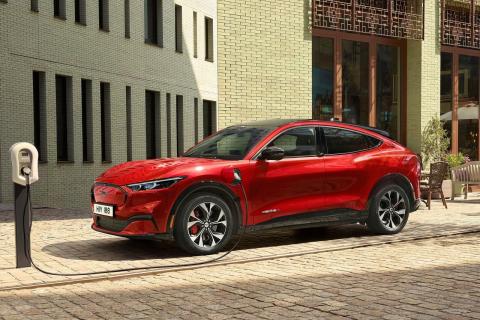Repairing a crashed electric car should not involve any more inconvenience than an equivalent one with a combustion engine, but just the opposite is true.
On the one hand, electric cars are simpler than combustion ones, since the absence of a heat engine means that they have many fewer parts, which translates into greater reliability and cheaper maintenance. Now, when you have to make a repair, things change. This is the big problem with electric cars after suffering an accident.
Repairing a crashed electric car should not involve any more inconvenience than an equivalent one with a combustion engine. However, the battery is the main element of an electric car and, according to Automotive News, its repair is increasingly difficult, due to three main reasons: the high costs involved, the difficulty involved in its handling and the shortage of components.
As a consequence of this, many damaged electric cars are considered irreparable and are ending up in the scrapyard. And this action is totally opposed to the ideal of sustainability that this type of car is supposed to represent.
This is the big problem with electric cars after suffering an accident
The heart of an electric car is the battery and it is also its most expensive and complex component. It is responsible for between 30 and 50% of the price of the vehicle and, in addition, it is a highly polluting element due to the materials necessary for its manufacture.
And repairing batteries is becoming more and more complicated, due to the high costs involved, the difficulty of handling them, and the scarcity of components to manufacture them.
Even in accidents where the battery has not suffered significant damage or only a few cells have been affected, the repair is so expensive that it exceeds the market value of the vehicle. This means that, in some cases, manufacturers do not contemplate the repair of the battery, but rather replace it with a new one.
In this way, a battery that could be fixed ends up being discarded, because manufacturers only sell new batteries, with the environmental impact that this entails.
Concern for the future
This situation could worsen in the future with Tesla’s new structured batteries, with 4680 cells, although other manufacturers, such as Ford and General Motors, claim that they have designed battery packs that can be manipulated and repaired by modules.
Given the increase in electric cars that is expected in the coming years, a tremendous challenge arises: if with the slightest hit the battery will have to be completely changed, there will be a significant accumulation of batteries that will have to be reused or recycled.
Batteries from vehicles with few kilometers that, being able to be repaired, were sent to the scrapyard.
On the other hand, the useful life of electric cars is significantly shortened, since it will be conditioned to not suffer any impact. What in a combustion vehicle is easily solved in the workshop, in electric cars it can become a problem.











